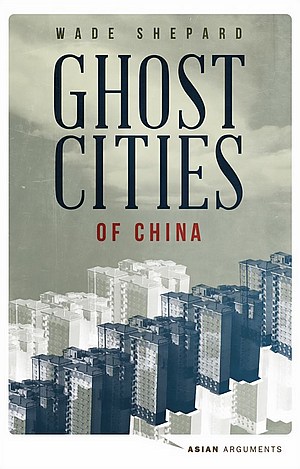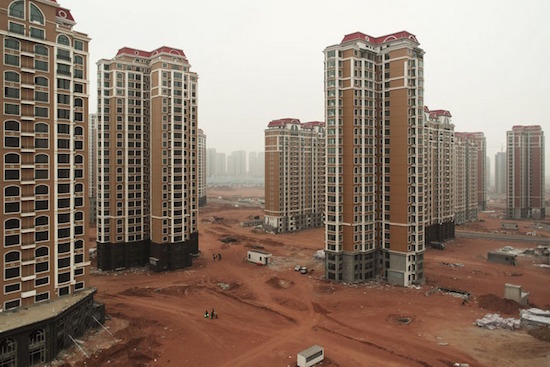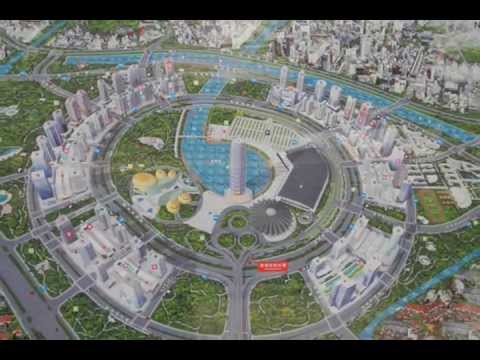The rapid rise of China as one of the world’s economic powerhouses has been astonishing to witness: Due to the sheer volume of exportable goods produced within the country, and the largest labor force in the world, China has been given the unofficial status of the world’s factory. However this slightly derogatory and naive term is becoming more and more redundant as China is hastily being transformed beyond recognition from a production-based society to a consumerist one. The World Bank states that:
Since initiating market reforms in 1978, China has shifted from a centrally planned to a market based economy and experienced rapid economic and social development. GDP growth averaging about 10 percent a year has lifted more than 500 million people out of poverty
This is a truly a remarkable accomplishment in economic reform, yet has not been without its shortcomings to the general populace. High inequality is widespread, environmental concerns and sustainability is a major concern. One of the other aspects of China’s growth has been the mounting need/desire to increase its urban spaces as more and more rural communities up sticks and move to the cities to partake in the economic boom. China has put into practice a colossal programme of urban renewal and expansion as well as creating brand new cities from the ground up. When the Communist Party came to power in 1949 there were 69 cities, today that number has leapt to 658 cities of various population densities. No civilisation in history has built so much in such a short space of time. Yet the majority of these new constructions remain virtually empty. Towers of apartment buildings with no tenants. Shopping malls, and offices without shoppers or workers, sports stadiums with no home teams. China is building pristine virgin cities that no one has yet to touch. Why is this happening? Could China be building these metropolises in preparation for a mass external migration as it surpasses the West as the world’s economic power?
In Wade Shepard’s book Ghost Cities of China (Zed Books, part of the publishers excellent Asian Arguments series) the answer to that question could possibly be "yes", as is stated in the first chapter: "By 2030 it is projected that one in eight people on Earth will live in a Chinese city…"The allure of China to travelers from the West has set many on a journey of discovery. The perspective of a nation still in touch with its ancient traditions has an appeal to our Westernised mindset, in which tradition and wisdom has mostly been replaced with meaningless consumerism. The shock is that the metropolises being constructed in China and the predicted mass migration to these sprawling urban centres is forcing the country’s aspirations and traditions collide.
In Ghost Cities of China, Wade Shepard has chronicled China’s astonishing rise by placing himself in the epicentre of these urban developments. He has spent two years navigating the country and venturing to these unspoiled metropolises. Like Bradley C. Garrett’s excellent book, Explore Everything: Place-Hacking the City (Verso Books), Ghost Cities also contemplates a desire to explore the unexplored, and find the humanity in places that are barely touched upon by humans.
Garrett’s book endeavours to rediscover and reclaim the lost spaces of our ever-developing world. Spaces that have been cut off by constant urban growth and prosperity, or were never intended for human occupation. Old mines, sewer networks, bomb shelters, bridges and urban monoliths, places that seem inaccessible from the designated commuter networks. the danger of getting lost, getting stuck – or even of death – is part and parcel of the thrill of discovery, referred to by Garrett as "edge work". Ghost Cities of China is not so much about personal risk – though certainly there is an economic risk to China’s obscene spending – more the discovering of spaces presumably intended for human occupation before any human occupation has occurred. Yet the draw of psychogeography that makes Garrett’s book so appealing is also at play here. Shepard states in his introduction that: "There is often this subdued archaic thirst in the traveller to be the first one to chart out a new dot on the map and then return home and tell everyone about it." The desire to uncover something new in the age of Google Maps, Street View, and GPS software is overwhelming. These brand new urban centres of China, barely gazed upon by orbiting satellites, quench this thirst for new discoveries. Yet, they are hardly Ghost Towns: despite the fact they are manmade in design and construction, as of yet no soul has left an imprint on the physical space, let alone the spiritual.
Shepard does not discount the often-tragic human story behind China’s mass development. What could have easily have been a celebration of the drive towards modernity, thankfully becomes a two-sided argument through the inclusion of the residents of villages, districts, towns, and cities, who have been on the receiving end of mass eviction and relocation. Shepard employs case studies to break the flow —welcome additions in further opening up the discussion of the distress of mass development in the name of economic growth and future prosperity causes on actual people. Shepard states that "Forced evictions and demolitions have become epidemic in China," and the case study of the Zhang family who occupied a property in the ancient city of Taizhou is an extreme and shocking, though hardly rare, version of events: "It was around three in the morning. They closed off the street and 100 police in riot gear charged in". The family were protesting their eviction on the roof of their building as it detonated beneath them.
And it is not just the people who are relocated: land and sea is also adjusted, added to, and extracted in order to command the environment for more development. China’s urban expansion has not been foiled by the natural landscape, and the need to require more land is as incessant as it is absurd. Mountains that surrounded the city of Lanzhou in Gansu province for example, were culled and flattened in order to make space for more usable and sellable land. The scale of the operation is unfathomable: "More than 1,000 excavators at a time were unleashed on 700 mountains in a 25 sq km area so a massive new district could be built." Shanghai’s Nanhui New Town was cultivated by "putting a massive barrier wall out in Hangzhou Bay, which caught the soil as it went out to sea. As the area silted up the wall was repositioned out further and further until the desired amount of land had been reclaimed." The Chinese governments excessive need to build has placed the whole environment and the citizenry under a form of bondage.
Ghost Cities of China is certainly an important contribution to Asian studies, though the impact China will have on the world in the next few decades also makes it a significant text in understanding China’s renewed place and influence in global politics. Thankfully Wade Shepard has hit upon an even approach in his style and structure of the text. The foundations may be made of dry economics, but – in laying down juicy travelogues as an extra layer – it makes for a more substantially satisfying and well informed read.

Ghost Cities of China is out now, published by Zed Books



